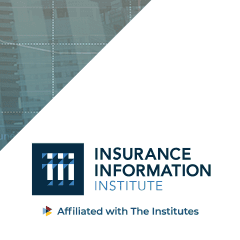
By Max Dorfman, Research Writer, Triple-I (04/29/2022)
Several recent reports quantify the growing risk and cost of cyber attacks in 2021.
Willis Towers Watson PLC, a multinational risk-management, insurance brokerage, and advisory company, and global law firm Clyde & Co, surveyed directors and risk managers based in more than 40 countries around the world. They found that 65 percent regard cybercrime as “the most significant risk” facing directors and officers. Data loss and cyber extortion followed, at 63 percent and 59 percent, respectively.
In 2021, there were 623.3 million cyberattacks globally, with U.S. cyberattacks rising by 98 percent, according to cybersecurity firm SonicWall. Almost every threat increased in 2021, particularly ransomware, encrypted threats, Internet of Things (IoT) malware, and cryptojacking, in which a criminal uses a victim’s computing power to generate cryptocurrency.
The frequency of ransomware attacks alone rose by 105 percent globally in 2021, SonicWall says, making them the most frequent type of cyberattack on record. The State of Ransomware 2022 by Sophos, a security software and hardware company, found that 66 percent of organizations surveyed were attacked by ransomware in 2021, rising from 37 percent in 2020. Ransomware payments often trended higher, with 11 percent of organizations stating that they paid ransoms of $1 million or more, up from 4 percent in 2020. Additionally, 46 percent of organizations that had data encrypted in a ransomware attack paid the ransom.
The 2021 Software Supply Chain Security Report by Argon, an Aqua Security company, underscores the main areas of criminal focus, including: “open-source vulnerabilities and poisoning; code integrity issues; and exploiting the software supply chain process and supplier trust to distribute malware or backdoors.”
According to the Argon report, cybercriminals often use these methods to extort victims:
- Encryption: Victims pay to regain access to scrambled data and compromised computer systems that stop working because key files are encrypted.
- Data Theft: Hackers release sensitive information if a ransom is not paid.
- Denial of Service (DoS): Ransomware gangs launch denial of service attacks that shut down a victim’s public websites.
- Harassment: Cybercriminals contact customers, business partners, employees, and media to tell them the organization was hacked.
“The number of attacks over the past year and the widespread impact of a single attack highlights the massive challenge that application security teams are facing,” said Eran Orzel, a senior director at Argon.
Cyber insurers work toward protecting businesses
Cyber insurance remains an important investment for many companies, particularly as cyberattacks continue to wreak havoc across industries. Investing in cyber insurance can help an organization recover from an attack, with cyber insurance companies often helping to recover data, repair damaged devices, protect a company from civil lawsuits, and fixing any reputational damage sustained during an attack.
However, the first line of defense is creating a robust cybersecurity system, training employees on how to identify a potential attack, encrypting company data, and enabling antivirus protection. With only half of businesses reporting a consistent encryption strategy, and the cost of data breaches continuing to rise, organizations must do more to protect themselves and their customers.












